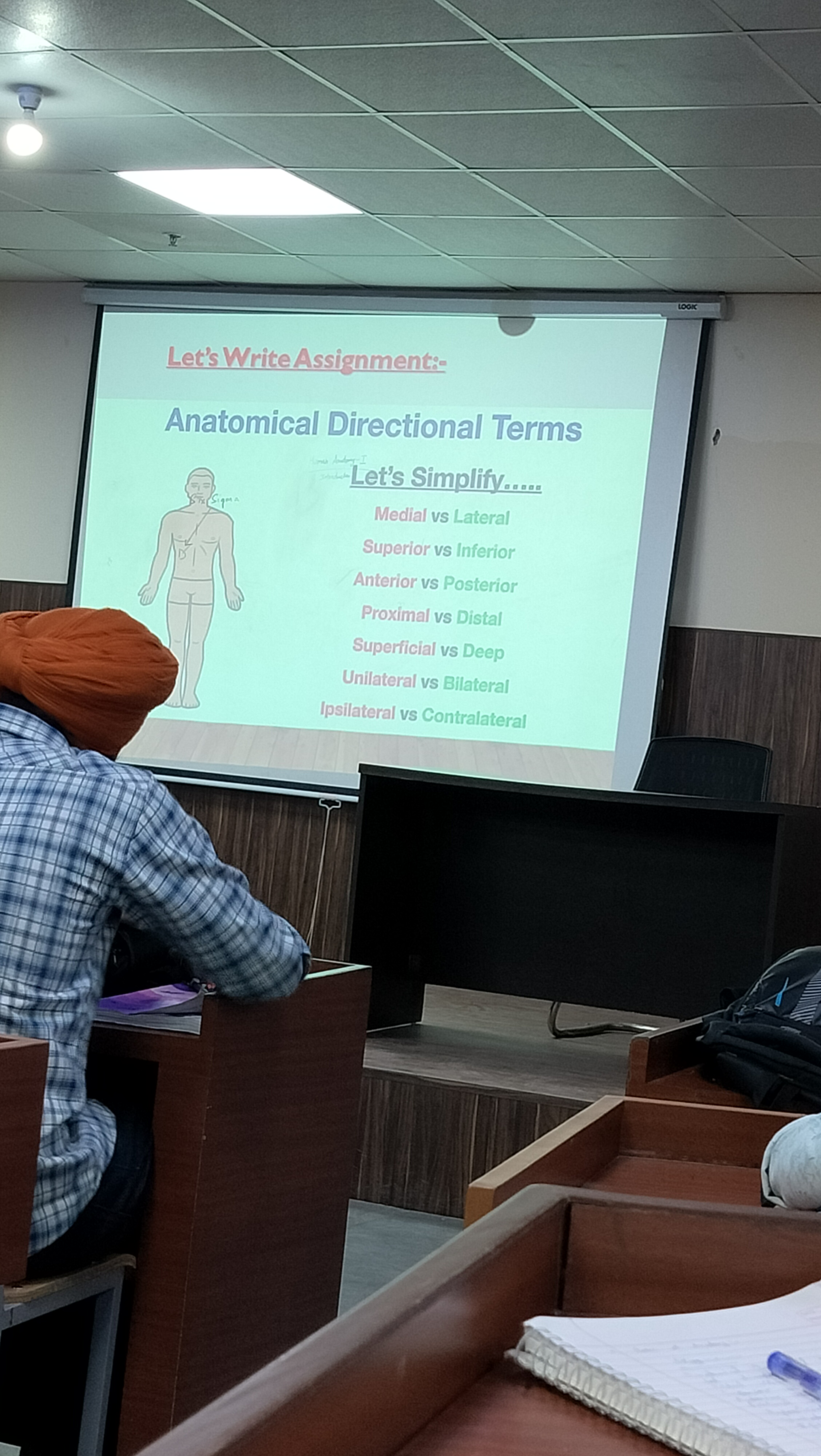What are the meanings of anatomical directional terms like medial vs lateral, superior vs inferior, and others?

Understand the Problem
The question seems to be asking about anatomical directional terms and their meanings, likely as part of an educational assignment.
Answer
Medial vs Lateral: Midline vs side, Superior vs Inferior: Head vs feet, Anterior vs Posterior: Front vs back, Proximal vs Distal: Near vs far, Superficial vs Deep: Surface vs internal, Unilateral vs Bilateral: One side vs both sides, Ipsilateral vs Contralateral: Same side vs opposite side.
The anatomical directional terms and their meanings are as follows: Medial (toward the midline) vs Lateral (away from the midline), Superior (toward the head) vs Inferior (toward the feet), Anterior (front) vs Posterior (back), Proximal (closer to the trunk) vs Distal (farther from the trunk), Superficial (nearer to the surface) vs Deep (farther from the surface), Unilateral (one side) vs Bilateral (both sides), Ipsilateral (same side) vs Contralateral (opposite side).
Answer for screen readers
The anatomical directional terms and their meanings are as follows: Medial (toward the midline) vs Lateral (away from the midline), Superior (toward the head) vs Inferior (toward the feet), Anterior (front) vs Posterior (back), Proximal (closer to the trunk) vs Distal (farther from the trunk), Superficial (nearer to the surface) vs Deep (farther from the surface), Unilateral (one side) vs Bilateral (both sides), Ipsilateral (same side) vs Contralateral (opposite side).
More Information
Anatomical directional terms help precisely describe locations and orientations in the body, crucial for medical professionals to communicate effectively.
Tips
A common mistake is confusing pairs like medial and lateral or proximal and distal. Visualizing or using a diagram can help solidify understanding.
Sources
- The web page with info on - Machine Design - machinedesign.com
- Anatomical Terms of Location - TeachMeAnatomy - teachmeanatomy.info
- Anatomical Terminology - SEER Training - training.seer.cancer.gov
AI-generated content may contain errors. Please verify critical information